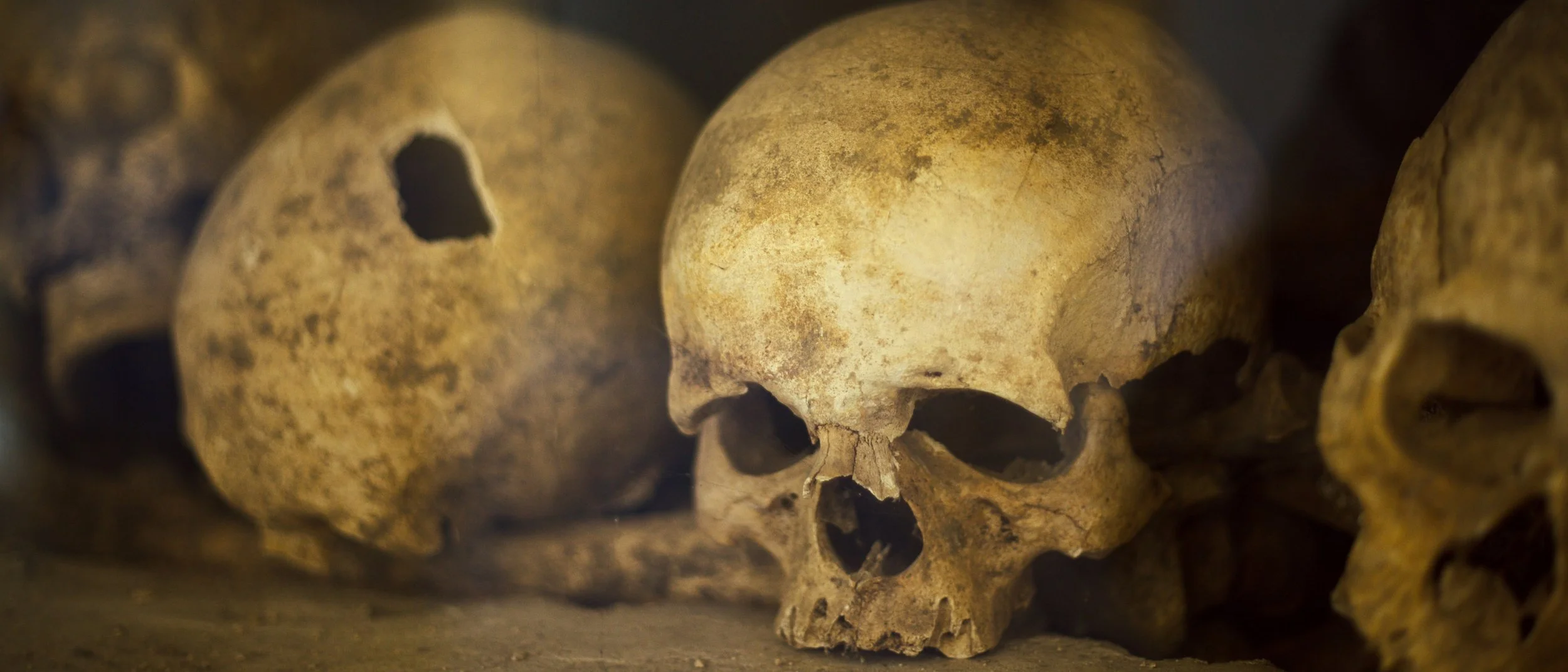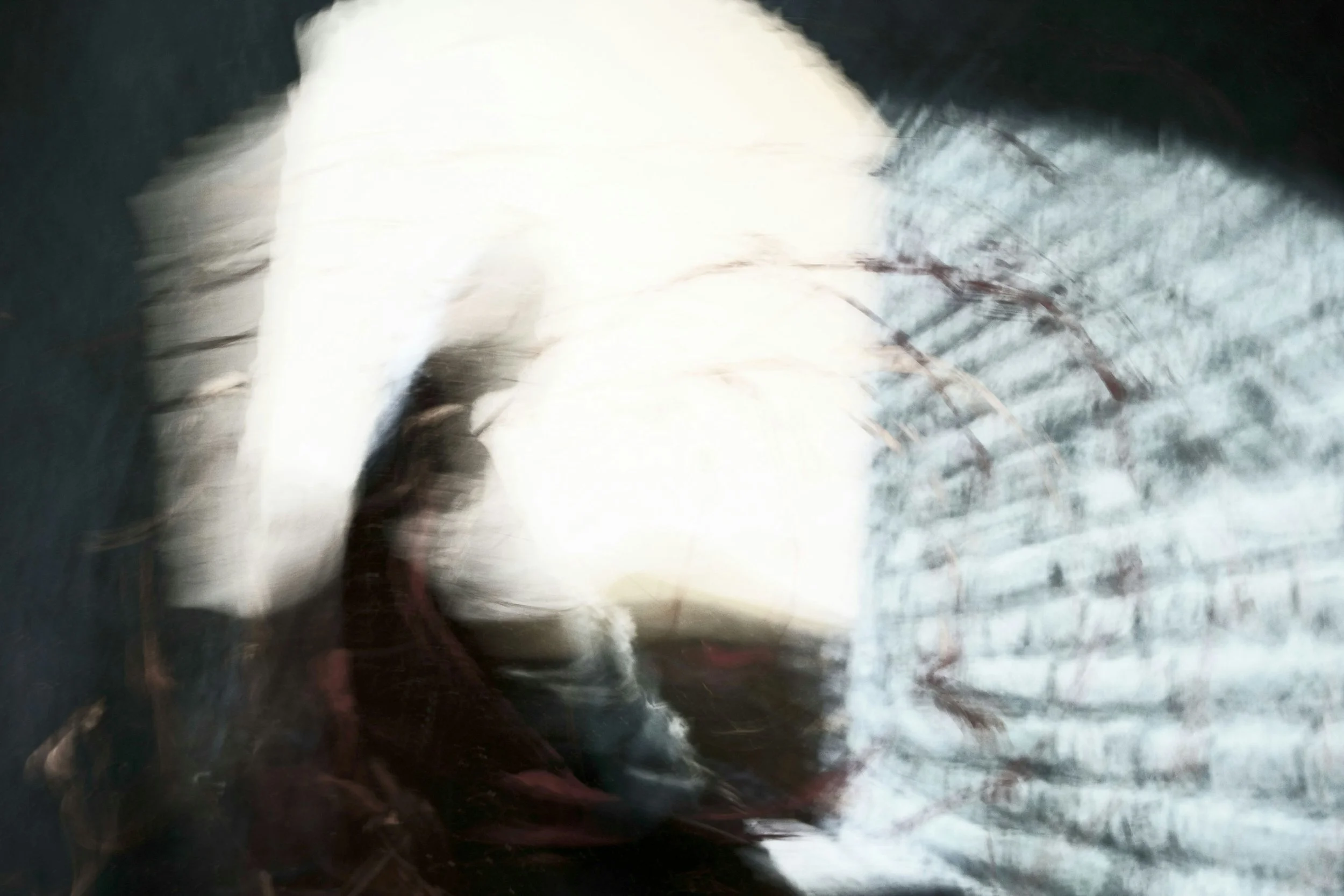You’re Going to Die, You Know
image: Diana Parkhouse for Unsplash
I have a memento mori practice.
That probably sounds a little gruesome to many of you, but hear me out. There is something oddly comforting in starting from the end and working back; it’s not about fear, it’s about clarity. Death is the great editor, cutting out the trivial, the ego, the noise. What’s left is what matters; to remember death is to awaken more fully to life.
When you hold your mortality close, you stop pretending you have endless time and you stop chasing distractions.
My practice is simple. I keep a (fake) skull on my desk, so that I work with the visual reminder in my constant field of vision. I have an app on my phone inspired by a Bhutanese folk saying (to be a happy person, one must contemplate death five times daily), that reminds me throughout the day: don’t forget, you’re going to die. And every morning I take five minutes to review this exercise.
I recommend that you check out the exercise (the link above takes you to a pdf you can download for free). How it works:
Start with the end in mind.
Remove everything from the table of your life.
Consider only one thing to add back to your table—the most important work or role in your life.
Allow this clarity to bring greater focus and presence to your life now.
image: Andrew V. for Unsplash
There’s a lot of history behind the practice:
In Plato’s Phaedo, Socrates states that the sole purpose of practicing philosophy “is to practice for dying and death.” Rather than being a morbid directive, the statement espouses mastering one’s fear of death by recognizing the body’s mortal reality and pursuing knowledge, which nurtures the immortal soul.
The Stoics taught the virtue of keeping death at the forefront of one’s thoughts as a reminder that nothing is permanent. In his letters Seneca advocated living every day “as a complete life” and advised, “Let us compose our thoughts as if we’ve reached the end. Let us postpone nothing. Let’s settle our accounts with life every day.” According to the Stoics, by meditating on death’s inevitability, one can live more fully in the present moment.
In Christianity, the practice of memento mori appears often in scripture, art, architecture, and in various rites. The concepts of morality, divine judgment, and penitence, reflected in biblical passages such as, “In all you do, remember the end of your life, and then you will never sin” (Sirach 7:36).
Among Catholics, Lent, a 40-day period of penitence and fasting that precedes the festival of Easter, begins with Ash Wednesday, in which a priest sprinkles ashes on the foreheads of congregants as a reminder of their mortality. Meditations on death have been a common form of writing by many Christian saints and theologians. St. Ignatius of Loyola’s Spiritual Exercises, for example, recommends meditating on death, one’s own and Jesus Christ’s, to help bring one closer to God.
In funerary art, memento mori is depicted by a winged skull, a skull and crossbones, or a full skeleton carved on gravestones and tombs. In painting, symbols of mortality include hourglasses, wilted flowers, dead animals, candles, and soap bubbles along with skulls and bones. These motifs also appear on timepieces, ornaments, and jewelry, especially in the Victorian era, and on religious items such as chaplets or rosaries carved out of ivory.
Festivals that honor the deceased or put death at the center of the celebration are known in many cultures, notably the Celtic pagan festival of Samhain, the Aztec-derived Día de los Muertos, the Buddhist Hungry Ghost Festival (Ullambana festival) and its many iterations in numerous Asian countries including Japan (where it is called Bon), Korea, Taiwan, China, Singapore, and Indonesia. Unlike the Christian Lent, these festivals are not somber times of reflection on one’s mortality but focus instead on ancestor worship, beliefs about “thin spaces” that allow for the passing interchange of dead and living spirits, or reverence for deities associated with death and the underground or otherworld. . In the case of Samhain and the pre-Hispanic precursor of Día de los Muertos, the festivals adapted to incorporate Christian beliefs and traditions, particularly those for All Souls Day and All Saints Day, and became better known in the modern era as Halloween and the Day of the Dead, respectively.
The danse macabre (French: “dance of death”) is a medieval allegorical concept found in drama, poetry, and music as well as the visual arts. It is traditionally represented as a procession of living and dead figures, with the living figures arranged according to their life rank (for example, from pope or emperor down to child or infant) being led by a death figure to a grave. The earliest known representation of the danse macabre was a series of paintings (1424–25) in the Cimetière des Innocents in Paris, which were destroyed in 1699. The danse macabre drawings of the German painter Hans Holbein the Younger in the early 16th century are considered by many to be the apex of this motif.
In literature and drama, memento mori has been expressed through forms such as the elegy in poetry, as seen in English poet Thomas Gray’s An Elegy Written in a Country Church Yard (1751). English playwright William Shakespeare’s Hamlet (written about 1599–1601) features one of most famous meditations on death, in Hamlet’s soliloquy while contemplating a skull
image: Cleveland Museum of Art for Unsplash
And it’s not all macabre. On Halloween my practice involves watching a scary movie (Poltergeist, Death Ship, The Shining, etc.; I don’t go full horror, but even these films remind me of what is and isn’t important); it’s less about contemplating darkness and more about having a little fun with it.
My memento mori practice keeps me from forgetting that my time on the planet is infinite. And the bonus I hadn’t imagined when I started? It’s improved my writing, too!
image: Jr. Korpa for Unsplash




